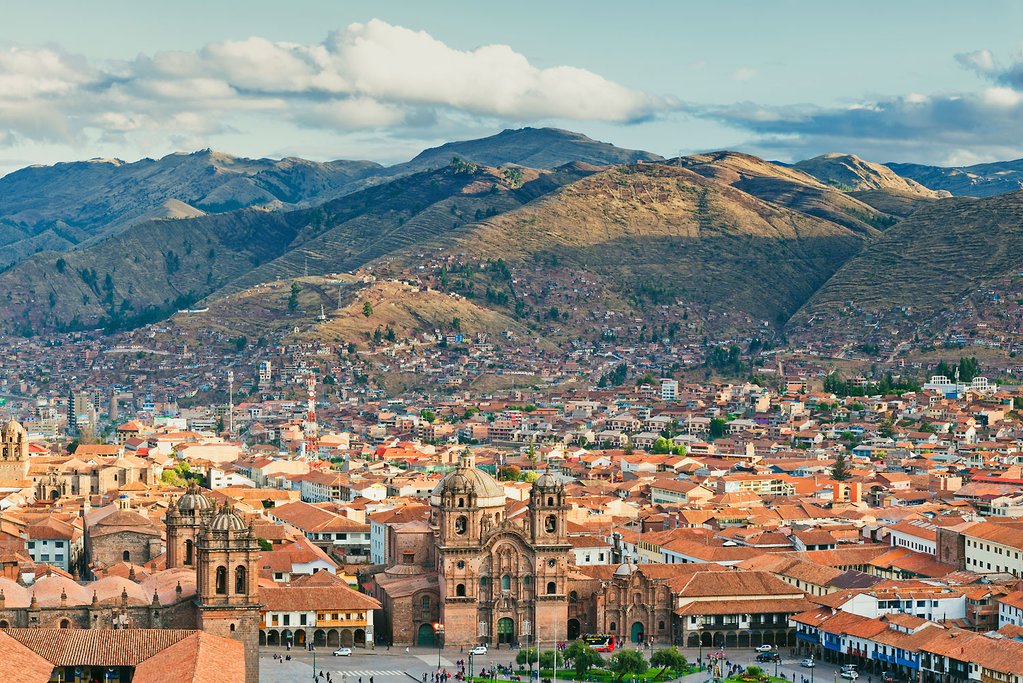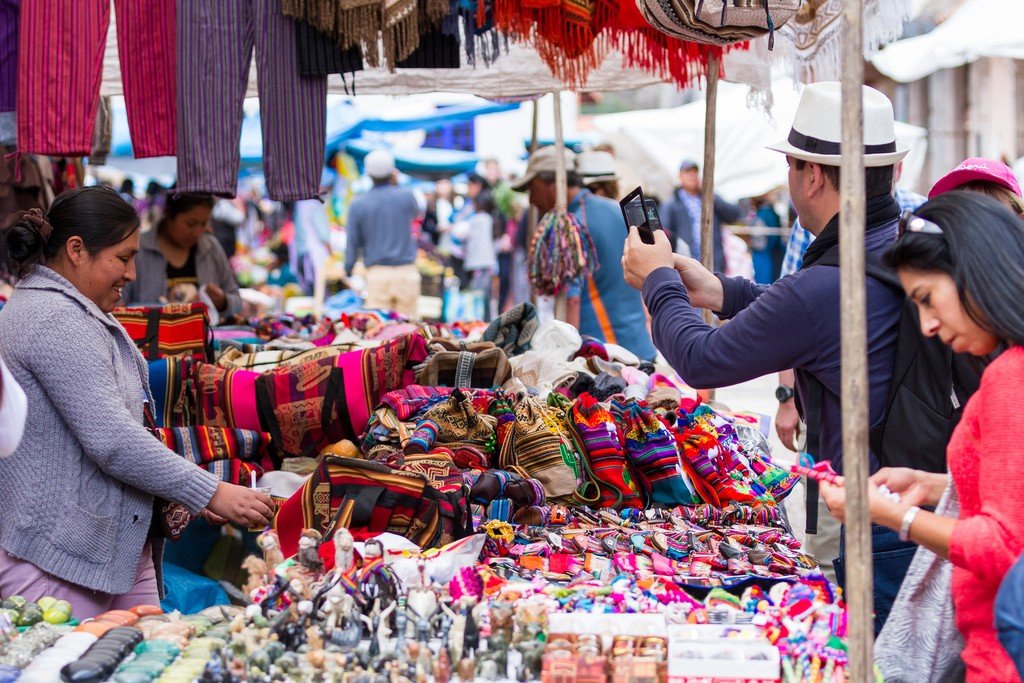
Sacred Valley Highlights - 5 Days

Highlights
- Explore the ancient citadel of Machu Picchu for a day
- Get to know the cultural and culinary highlights of Cusco
- See more historical ruins on a tour of the beautiful Sacred Valley
Brief Itinerary
| Day | Highlights | Overnight |
|---|---|---|
| Day 1 | Arrival in Lima, Transfer to Hotel | Lima |
| Day 2 | Arrival in Cusco, Exploring the City | Cusco |
| Day 3 | Tour the Sacred Valley: Cusco - Pisac - Ollantaytambo | Ollantaytambo |
| Day 4 | Machu Picchu Excursion | Cusco |
| Day 5 | Departing Cusco |
Detailed overview
Day 1: Arrival in Lima

¡Bienvenidos! Welcome to Lima, Peru's largest city and central metropolitan hub, and home to one-third of the country's population. Located at the site of a pre-Columbian indigenous Ychsma settlement, which was conquered by the Inca empire in the 15th century and later by the Spanish conquistadores, Lima has a fascinating history and a diverse mix of cultures. Amerindian, European, Afro-Peruvian, and Asian—especially Chinese and Japanese—influences make Lima a dynamic and exciting city to explore.
Chat with a local specialist who can help organize your trip.
Day 2: Arrival in Cusco

Head to the Lima airport for your transfer flight to Cusco. This ancient city is the former capital of the Inca empire, which reigned from the 13th to 16th centuries after conquering the Killke settlement on the same location.
Remember: you will be 11,000 feet (3,000 m) above sea level, so take it easy and remember to drink lots of water. Since Cusco was designed by the Incas as a city for walking, start your exploration of the narrow stone alleyways on foot. Take a walk through the plaza — if the weather is beautiful, it's a perfect place to sit on a balcony and have a cup of coca tea while adjusting to the elevation.
Suggested activities include:
- Visit the Coricancha, also known as "The Temple of the Sun." The temple was built by the Incan Emperor Pachacutec (1438 - 1572), and after the arrival of the Spaniards became the basis for the construction of the Santo Domingo Convent.
- See the Cathedral, the most imposing monument in the central Plaza de Armas and a repository for Cusco's colonial art. Its construction lasted for almost 100 years, beginning in 1560 and ending in 1654.
- Walk to Sacsayhuamán and next-door Quenqo, both archaeological complexes used mostly for religious and agricultural rituals, located 2.5 miles (4 km) from the city of Cusco. Built by the Killke people, Sacsayhuamán is a marvel of ancient architecture, a monolithic fortress built from giant blocks of stone, the origins and assembly of which remain a mystery.
- Discover the elaborate Puca Pucara ruins—an architectural complex of alleged military use with multiple plazas, baths, aqueducts, walls, and towers. It is believed that the entourage of the Incan emperor used it while he stayed at Tambomachay, the elaborate estate and baths nearby.
- Explore San Blas, an old bohemian quarter famous for its picturesque white walls, blue doors, and creative artisan community.
- Experience the legendary Mercado Central de San Pedro, a large and diverse market famous for its mouth-watering fruit juices, home-style meals, medicinal herb stalls, and rows of various meats, breads, vegetables, and other necessities.
- Eat lunch at a local Peruvian restaurant and sample local flavors and cooking techniques—crackling pork, pickled vegetables, seasonal flavors, bread baked in earthen ovens, roasted vegetables, and sweet donuts make for a delicious and filling meal.
Day 3: Tour the Sacred Valley

Your first stop today is Pisac, where you'll visit the ruins of the town and a market where you can pick up some handicraft souvenirs. Then head to Moray, where you'll see the three famous amphitheater-like terraces made by the Incas. These terraces are carved deep into the earth in the shape of a bowl. It is believed that the Incas once used these terraces as agricultural laboratories to determine the optimal conditions for growing crops.
In the afternoon, depart for Ollantaytambo, which contains some of the best-preserved Inca architecture in the entire Sacred Valley. Roam the winding alleys and vast plazas and gaze upon a marvelous llama-shaped ruin before heading to a local hotel for the night.
Day 4: Machu Picchu Excursion

After breakfast, take the local train to Aguas Calientes, the base for most Machu Picchu adventures. The ride takes you through a valley and into the Urubamba River canyon, then into the cloud forest as you near the Machu Picchu sanctuary.
Aguas Calientes contains the train station, a craft market, restaurants, and a variety of hotels for those who prefer to spend the night at the foot of the mountain and climb it early in the day. Stop here for lunch before taking the 25-minute bus ride up to the Machu Picchu ruins.
This 15th-century Inca citadel is located at 7,970 ft (2,430 m) and is a masterpiece of engineering that served as a sanctuary and retreat for the Incan Emperor Pachacutec and his royal court. Machu Picchu, which means "Old Mountain," is considered a World Heritage Site by UNESCO and is one of the new Seven Wonders of the World.
Built as a seasonal residence for the Inca family, Machu Picchu was rarely home to more than 800 people, and during the royals' absence, a mere 100 servants would remain at the site to maintain the grounds. Machu Picchu was abandoned 100 years after construction due to the Spanish conquest and remained largely hidden to the outside world until the early 20th century.
Your guide will lead you around the site and explain the different buildings and curious corners of the building complex. Approximately one-third of the site has been reconstructed into its original structure, giving visitors a sense for the grandeur and artistry of the original citadel.
After the two-hour tour, take the bus back to Aguas Calientes to connect to your train to Ollantaytambo and your connecting transfer to Cusco.
Day 5: Departing Cusco

Today is your last day in Peru. You will be met at your hotel for a transfer to Cusco Airport, where you will transfer to your international departure.
